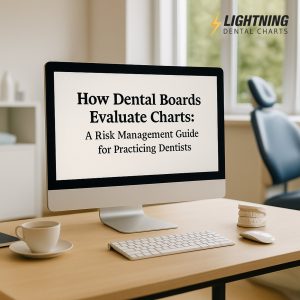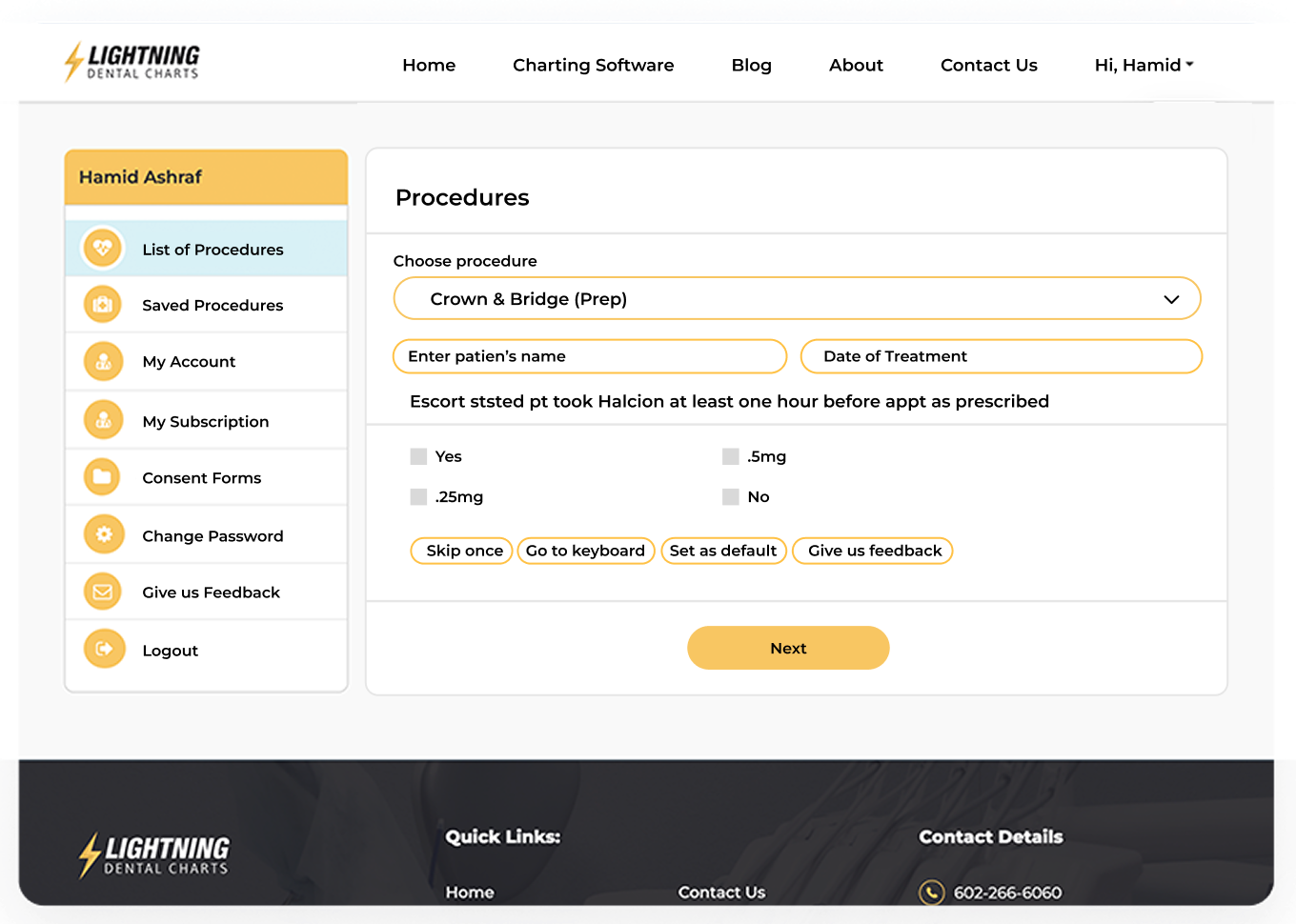This recurring series of blog posts is built on real dental board findings, designed to help general dentists avoid sanctions and strengthen their documentation.
 Your Charting Matters More Than You Think
Your Charting Matters More Than You Think
When the dental board receives a complaint, it typically begins with the patient’s allegation — but that is by no means where it ends. Board members are empowered to widen the scope of the inquiry and often expand cases to include reviewing:
Records
Treatment rationale
Staff certifications
And more
Your dental chart becomes the primary evidence. If the documentation appears vague, outdated, or fails to support the treatment performed, it becomes difficult to defend — even if the dentist provided clinically sound care.
This article kicks off The Dental Board Report, a recurring series rooted in real-world examples drawn from dental board cases. We’ll highlight:
What state dental boards examine
Where practices typically fall short
How to document care that holds up under scrutiny
Problem: Documentation Is the Most Common Violation
In August 2024, the Texas State Board of Dental Examiners released a five-year review of its most frequent violations (last page in link). The findings were unambiguous:
📊 General documentation errors accounted for 37.5% of all violations — by far the leading category.
Diagnosis issues came in second, followed by surgical coding and restorative care.
This mirrors trends seen in other states: the board may begin an investigation for one reason but issue sanctions based on documentation failures that surface during chart reviews. As one dental board member put it:
“If it’s not in the chart, then it didn’t happen.”
What Triggers a Chart Review?
1. Outdated or Incomplete Templates
Many dentists still rely on note templates designed years ago — often by software vendors or staff — not legal professionals. These templates frequently:
Omit key diagnostic findings (e.g., bleeding on probing, mobility, furcation)
Aren’t regularly updated to reflect legal or clinical changes
Fail to include a clear diagnosis or clinical rationale
Don’t comply with dental record keeping guidelines
Boards now expect documentation to align with current best practices in defensible dental charting. Templates that miss critical information or don’t justify care are easy targets for sanctions.
2. Weak or Missing Clinical Justification
One of the most common — and costly — documentation failures is a lack of clinical reasoning. If objective findings in the record don’t support your diagnosis and proposed treatment, expect board scrutiny.
Example:
A dentist billed for scaling and root planing (SRPs) based solely on pocket depths. However, the patient’s radiographs showed no bone loss. The board determined that this indicated gingivitis, not periodontitis — and ruled that SRPs were not warranted.
The result: a sanction for misdiagnosis and over-treatment.
When charting, include metrics aligned with ADA radiographic guidelines and current diagnostic criteria:
Pocket depths
Bleeding on probing
Bone loss
Mobility
Recession
Furcations
Radiographic interpretation
💡 This level of detail is critical for strong scaling and root planing documentation.
What Else Boards Are Looking At
Beyond clinical documentation, boards are increasingly examining practice operations — especially around staff credentialing.
We’ve seen a rise in board actions where dental assistants performed tasks like radiographs or coronal polishing without active certification. In nearly every case, the board holds the owner-dentist responsible for verifying credentials.
Most dentists can’t point to a system or process for doing this. That’s a liability.
A simple dental audit checklist — even an internal one — can help reduce this risk and show the board that credentialing is taken seriously.
The Broader Message: Boards Expect a Clinical Narrative
Across cases, dental board reviewers are asking: Does this chart tell a story that makes sense?
What they want to see:
Clinical observations → Diagnosis → Treatment plan → Execution
Evidence of diagnostic rigor
Real decision-making, not just boilerplate copy-paste notes
In today’s regulatory environment, charting isn’t just a clinical task — it’s a cornerstone of legal defensibility. Dentists who embrace defensible documentation as part of their overall risk management strategy are far better positioned to withstand a dental board complaint.
Upcoming Articles in The Dental Board Report
Each article in this series draws from anonymized real-world cases and recent state board decisions.
Coming up:
“When the Board Looks Beyond the Complaint” – Sedation charting failure discovered during unrelated review
“How a Hygiene Note Triggered an Audit” – A hygiene SRP note without a supporting diagnosis
“Are Your Staff Really Certified?” – Board sanctions issued for unverified dental assistant credentials
Make sure to regularly check our blog for future updates to this and other dental charting and dental risk management best practices.

